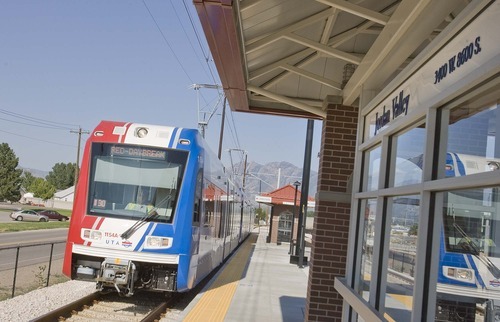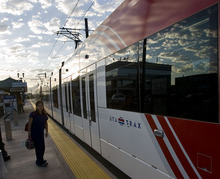This is an archived article that was published on sltrib.com in 2012, and information in the article may be outdated. It is provided only for personal research purposes and may not be reprinted.
Utah Transit Authority officials say they know that many customers want a restoration of direct TRAX service between the University of Utah and downtown Salt Lake City, and have hoped that the new airport line will bring that.
It won't, officials said Wednesday — at least not initially.
UTA General Manager Mike Allegra told his board that its research shows the most efficient configuration to move traffic is for the green line to go from West Valley City to the airport when that extension is complete, and for the red line to continue between the university and South Jordan.
That will continue to require a transfer off the red line to go downtown or to the airport — even though the old university line used to offer direct service from the university to downtown.
"We've had that before. The tracks are there. The routing exists," Allegra said. "But present-day economics are not allowing us to do this."
Still, he predicted, "Someday it will happen," and said UTA will likely create a fourth colored line to offer such direct service between the university and downtown and airport. "It's a monetary issue right now. ... If the economy changes wildly and resources become available, anything's possible."
Allegra said one of the things UTA will watch, however, is how completion of the new FrontRunner commuter rail later this year from Provoto the downtown Salt Lake City intermodal hub may affect demand from the hub to the university.
Allegra said the fastest way to go between the hub and the university now is to take the Route 2 bus, which is about 10 minutes faster than TRAX because of transfers. He said so many people have finally discovered it that the agency often has two buses together on the No. 2 route because one fills up.
He defended the red line routing to South Jordan and away from downtown. He said those trains are filling up, even in off-peak hours.





